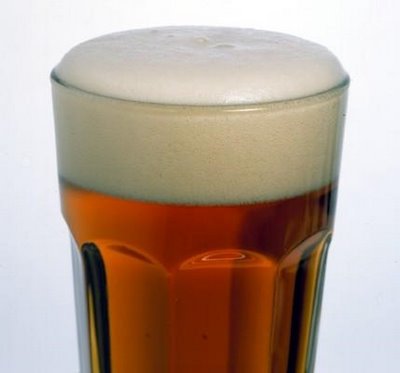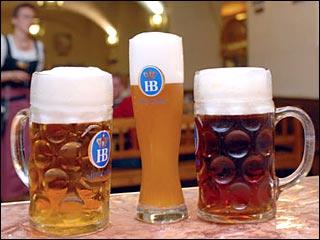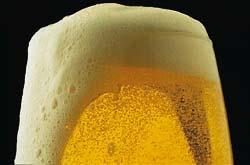Everyone likes a little head once in a while, so today we take a look at beer foam.
Information contained in this post was gathered from the article by Wolfgang Kunze here.
 Foam occurs on dispensing the beer as a result of the formation of CO2 bubbles released by the reduction in pressure. The C02 bubbles collect surface active materials as they rise.
Foam occurs on dispensing the beer as a result of the formation of CO2 bubbles released by the reduction in pressure. The C02 bubbles collect surface active materials as they rise.These surface active substances have a low surface tension, this means that within limits they can increase their surface area and also, after the bubbles have risen, they form an elastic skin around the gas bubble.
The greater the amount of dissolved C02 the more foam is formed. But foam formation is not the same as foam stability. Foam is only stable in the presence of these surface active substances.
No stable foam can be formed in a glass of mineral water since there are none of these substances present there. Thus one must always distinguish between foam formation and foam stability. It is the stability which is most important.
 Foam begins to collapse as soon as it is formed, but the rate of collapse is very variable. Collapse begins with the bursting and flowing back of the skins of the gas bubbles, as a result of which evaporation processes are encouraged and the foam becomes more solidified in the upper region. This makes it possible to dispense more beer into the glass after a relatively short time (after about a minute) so that the solidified foam is pushed up to form a foam crown above the glass. This cannot be obtained by using a single dispensing process.
Foam begins to collapse as soon as it is formed, but the rate of collapse is very variable. Collapse begins with the bursting and flowing back of the skins of the gas bubbles, as a result of which evaporation processes are encouraged and the foam becomes more solidified in the upper region. This makes it possible to dispense more beer into the glass after a relatively short time (after about a minute) so that the solidified foam is pushed up to form a foam crown above the glass. This cannot be obtained by using a single dispensing process.The further solidification of the foam can be recognised by the formation of foam rings produced on the wall of the glass each time a drink is taken.
 Apart from the technological factors during beer production, foam stability can be affected subsequently.
Apart from the technological factors during beer production, foam stability can be affected subsequently.The greatest negative effect is the foam destroying effect of oils and fats which become applied to the rim of the glass as a result of food consumption and can destroy the foam in a matter of seconds. Use of clean glasses without the slightest film of fat, exchange of empty glasses with fatty rims, and use of clean polishing cloths are only a few of the conditions needed to ensure good foam stability. Even the smallest traces of fat are harmfull.
Insufficient pressure in the delivery pipes of the pub, inadequately cleaned beer pipes and unsuitable dispense tap fittings can also decrease the stability of the foam.
2 comments:
For a minute there I thought we were watching a government produced documentary. But then I remembered, it's beer blogging Friday! So, I did one, too.
Um, honey, are you really talking about beer here?????
Mrs TEH
Post a Comment